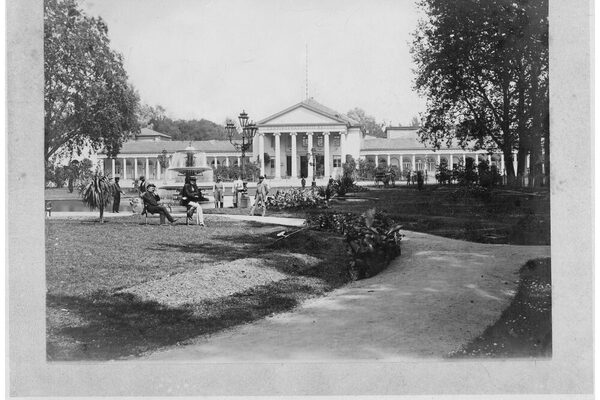Bowling Green
The bowling green stretches between Kurhausplatz and Wilhelmstraße, the fountain and theater colonnade. The name goes back to the game of bowls, which was popular in England in the 16th century and was played on well-maintained, level lawns.
Towards the end of the 18th century,Karl Wilhelm Prince of Nassau-Usingen had a four-row avenue of poplars laid out in front of the Sonnenberger Tor to the so-called Wiesenbrunnen to remedy the lack of parks and footpaths close to the town. The construction of the old Kurhaus was accompanied by the creation of the elongated lawn, which was bordered on both sides by double avenues. After the colonnades were built, the park reached its present size.
In 1855/56, the lawn was redesigned under the direction of garden director Carl Friedrich Thelemann in the style of an English landscape garden with flowerbeds, broderies and walking paths running between them as well as two water basins with cascading fountains designed by Theodor Goetz in the central axis. In 1905, the grounds were filled in in connection with the construction of the new Kurhaus and laid out even more magnificently. In the 1920s, the grounds finally reverted to a simple lawn.
The most extensive construction work took place in 2005/06 with the construction of an underground parking garage. As part of these measures, the fountains were restored, Christian-Zais-Straße and Kurhausplatz were provided with new basalt paving and new double rows of plane trees were planted parallel to the colonnades.
Today, the grounds are used for concerts and other open-air events on special occasions.
Literature
Czysz, Walter: Vom Römerbad zur Weltkurstadt, Geschichte der Wiesbadener heißen Quellen und Bäder, Wiesbaden 2000 (Schriften des Stadtarchivs Wiesbaden 7) [p. 164 f.; 283].
